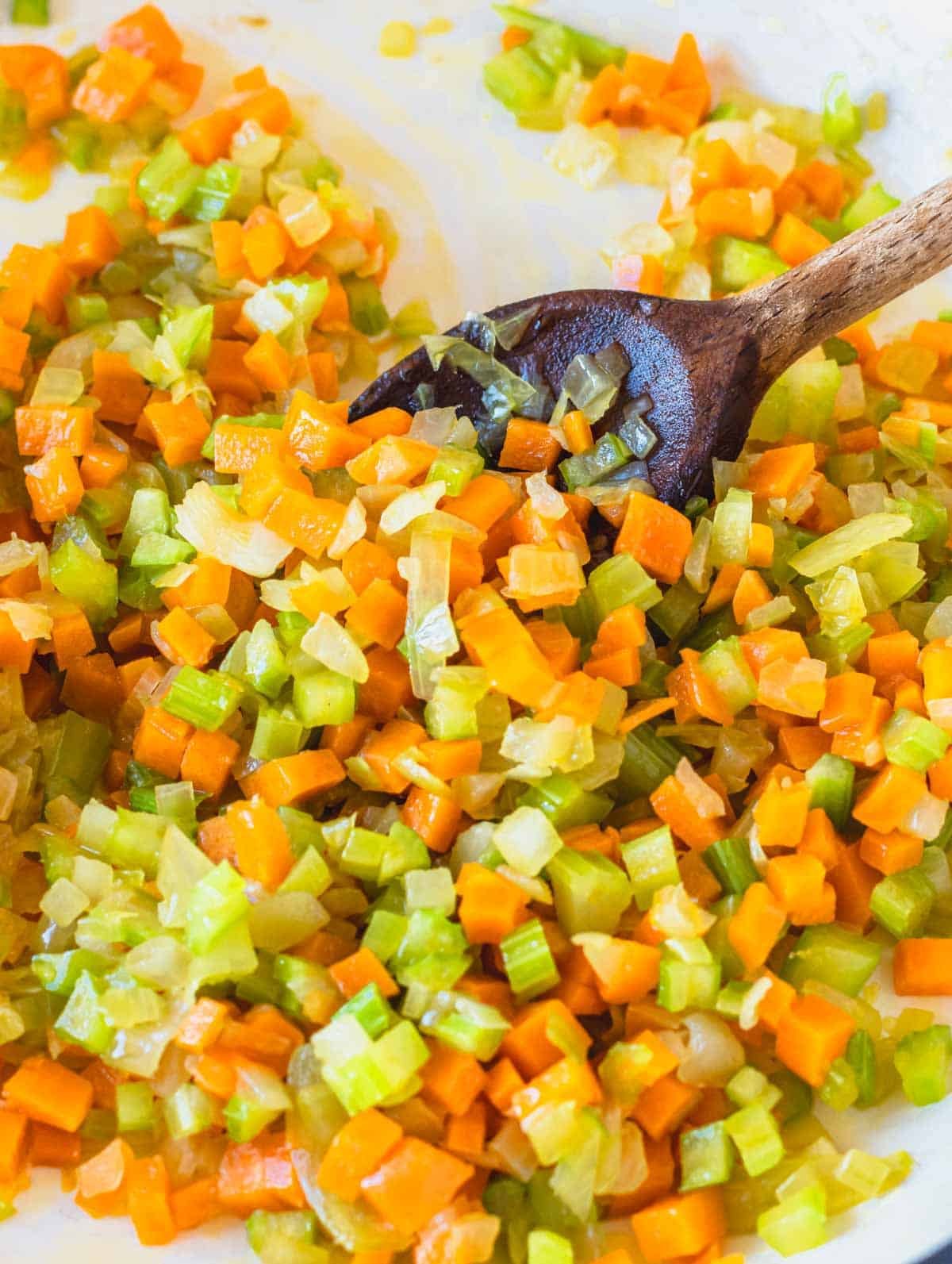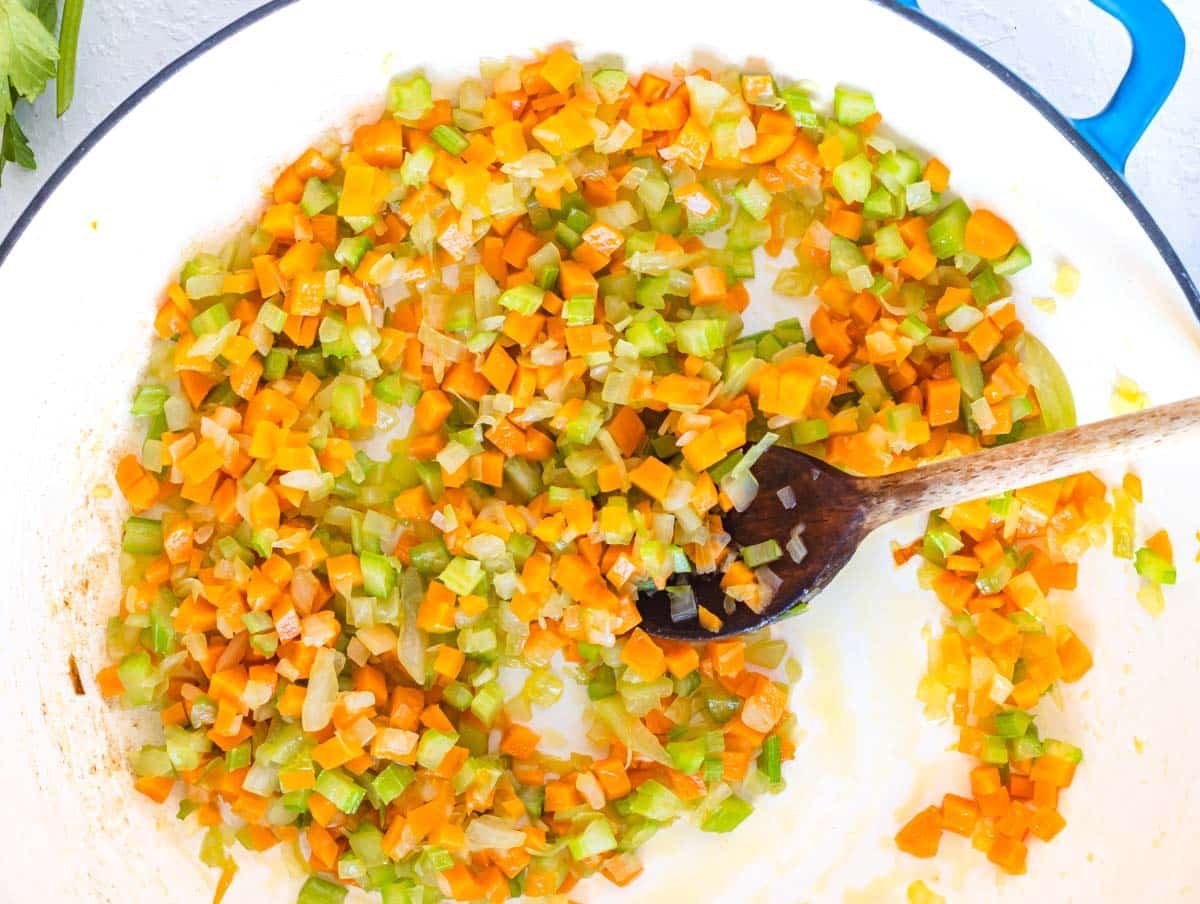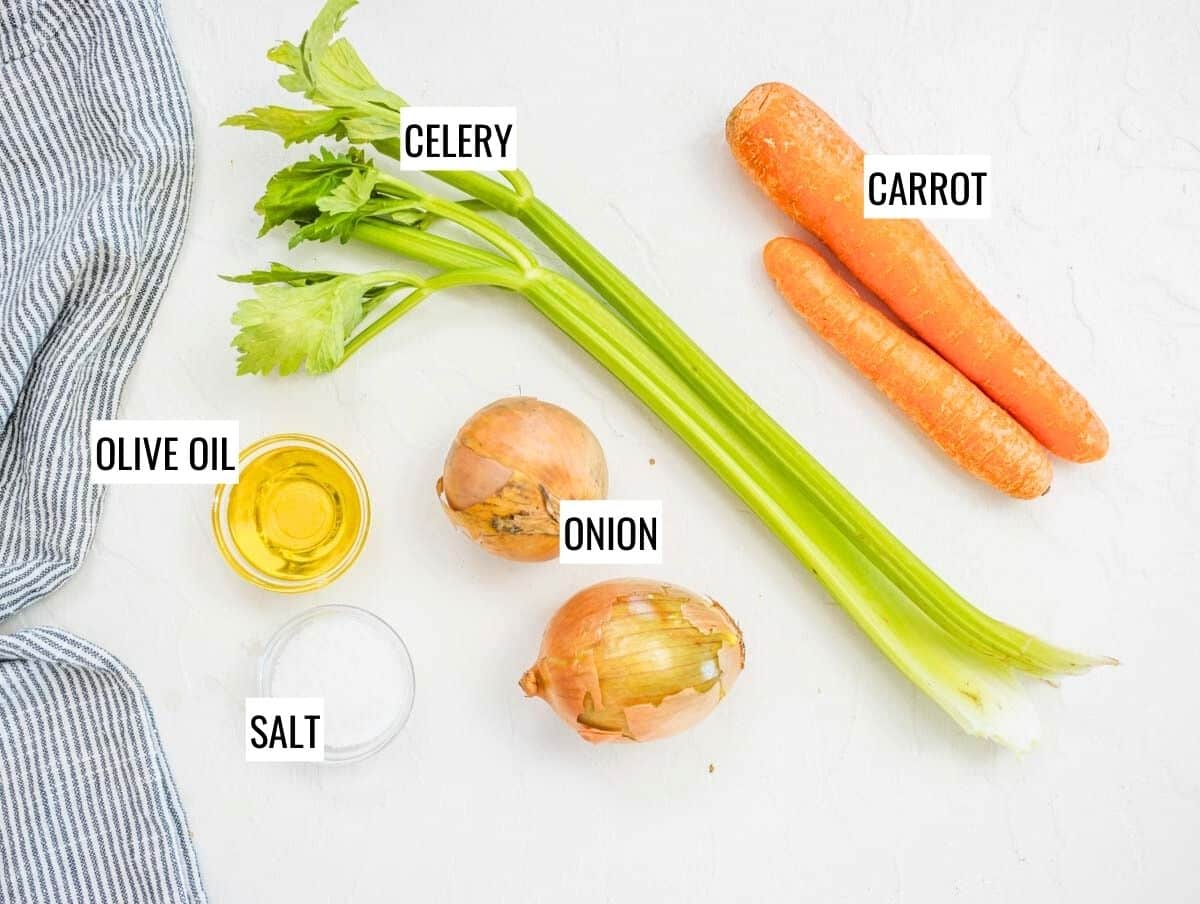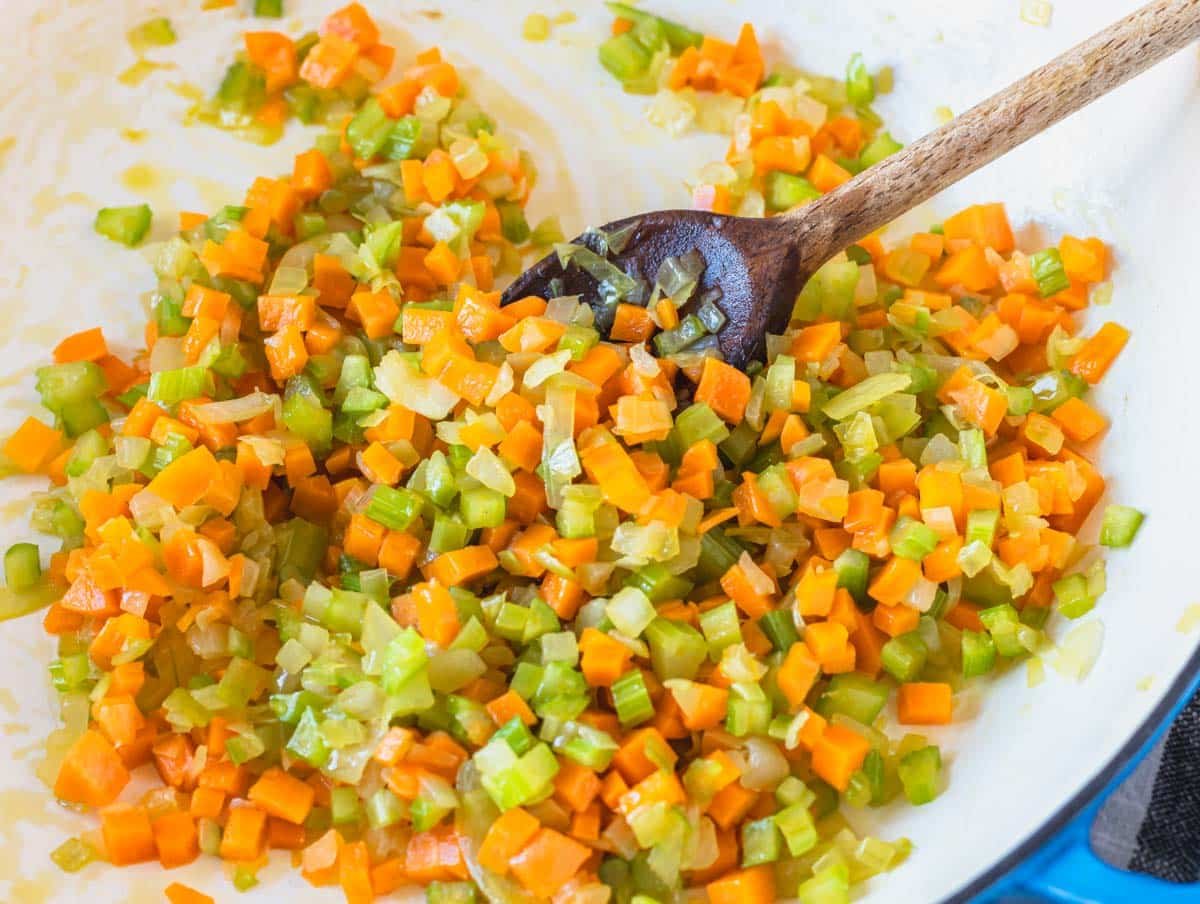Soffritto is a simple and effective Italian cooking technique used as a first step to add flavor to soups, stews, pasta sauces, casseroles, and many other dishes.
You can make Italian soffritto by gently cooking chopped onion, celery, carrot in extra virgin olive oil to allow the veggies to release their flavors.

Table of Contents
Introduction
Soffritto is a flavor base used in Italy and other Mediterranean countries like France (Mirepoix), Spain (Sofrito), and Portugal (Sofrito) to add flavor to sauces, soups, stews, casseroles, and many other dishes.
Our popular lentil vegetable soup, lentil stew, and minestrone soup all start with soffritto.
If like me you grew up in an Italian household, soffritto is the first smell you start to recognize as a toddler 👶.
I remember running up the stairs to my grandma’s apartment as a kid. When I smelled soffritto, I knew something good was cooking…and I ran faster 🤤.

You guys, I can’t stress this enough! Knowing how to make an good Italian soffritto is a game changer in your kitchen.
It’s the most effective way to add depth of flavor to a dish from the ground up with simple pantry staples.
In Italian cuisine, soffritto is made by gently cooking one or two parts onion, one part celery, and one part carrot in extra virgin olive oil.
The vegetables should be finely chopped with a sharp knife or a mezzaluna.
They should cook slowly, without browning or caramelizing, until they become soft and translucent and release their sweet flavor.
Ingredients

- Extra virgin olive oil: substitute regular olive oil.
- Onion: you can use white onion, yellow onion, or red onion. Substitute shallot, leek, green onions, and scallions for onion. In some cases, like our Tuscan soup, you might use both onion and leek.
- Carrots
- Celery
- Garlic: optional, depending on the recipe.
- Salt
Instructions
1. Chop the vegetables
Rinse, peel, and chop the carrot into sticks with a sharp knife, then cut it into small dice.
Rinse and chop the celery into sticks, then cut it into small dice.
Peel the onion, cut it in half, and then finely chop it into small dice.
Tip: try to chop the vegetables into small dice of similar size. Alternatively, pulse them together in a food processor until finely chopped. Don’t overprocess them, though, or they’ll become a mash.
Hand-chopped vegetables have a better texture than processed vegetables.

2. Cook the vegetables
Heat the extra virgin olive oil in a large pan, skillet, or pot, then add the chopped vegetables and a pinch of salt.
Cook gently on medium to medium-low heat for 5 to 20 minutes, depending on how much time you have and on the recipe. Stir often with a wooden spoon.

The longer the vegetables cook, the more flavor they release, but if you are short on time, 5 minutes is enough to release some flavor.
The vegetables should not brown or caramelize. They should slowly become tender and translucent, releasing their sweetness.

Recipes with soffritto
Soffritto is the starting point of many recipes, from soups and stews, to pasta sauces and main courses. Here are some recipes we think you’ll love:
They all start wiht a 5-minute soffritto and we think they are delicious.

Soffritto
Ingredients
- 2 tablespoons extra virgin olive oil
- 1 medium carrot finely chopped
- 1 rib celery finely chopped
- 1 medium to large onion finely chopped
- ¼ teaspoon salt optional
Instructions
- Rinse, peel, and chop 1 medium carrot into sticks with a sharp knife, then cut it into small dice.Rinse and chop 1 rib celery into sticks, then cut it into small dice.Peel 1 medium to large onion, cut it in half, and then finely chop it into small dice.
- Heat 2 tablespoons extra virgin olive oil in a large pan, skillet, or pot, then add the chopped vegetables and ¼ teaspoon salt.Cook gently on medium to medium-low heat for 5 to 20 minutes, depending on how much time you have. Stir often with a wooden spoon.The longer the vegetables cook, the more flavor they release.
- The vegetables should not brown or caramelize. They should slowly become tender and translucent, releasing their sweetness.Use soffritto as a flavor base for other preparations.
Video
Notes
Tips
- Use the best oil you can afford; we recommend extra virgin olive oil, regular olive oil, or avocado oil for the healthiest soffritto.
- Don’t burn the oil. Keep the heat on medium to medium-low. Add the vegetables as soon as the oil starts to warm up. Don’t wait for it to smoke!
- Avoid browning or caramelizing the vegetables. For soffritto, the vegetables should cook slowly, become tender, and release their sweetness without browning.
- Take your time. Try to slow-cook the vegetables for at least 5 minutes so that they have time to build flavor.
- Hand-chop the veggies for the best texture. Pulse them in a food processor if you are short on time.
Storage
- Make ahead: Soffritto is excellent for meal prep! You can make a big batch of soffritto and freeze it in small portions for later use.
- Refrigerator: It keeps in an airtight container in the fridge for up to 3 days.
- Freezer: Let the soffritto cool down completely, then portion it before freezing. You can freeze it in an ice cube tray or freezer-friendly baby food containers. It keeps for 3 months.





can this be done without oil substituting vegetable broth? I try to be sugar oil salt (SOS) free and adapt as many of your recipes as possible. Thank you
Hi Wendy, yes you can substitute vegetable broth or water.
This, of course, will not create the same flavor base because its oil-free but we have tested with various soups and curries, and it works 🙂
I hope that helps – let me know!
Kindest, Louise